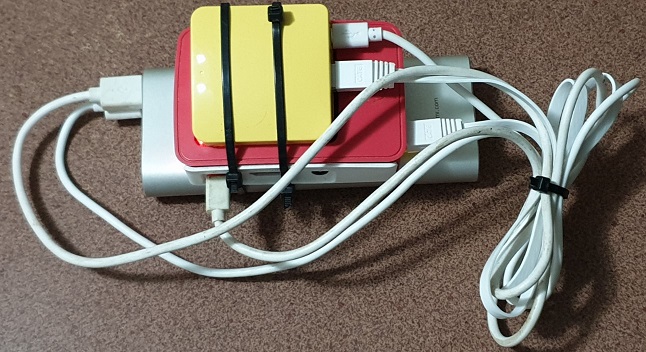
- Silver item is a power bank
- Red item is a Raspberry Pi 3 (rpi3) running unofficial and unsupported preview of Debian Buster, Debian on the Raspberryscape: Great news!
- Yellow item is a GL.iNet GL-MT300N-V2 router.
Since this was a field test for development purposes and as part of development we are concerned with standardising the portable map server for use on an OS with widespread and accepted use, we are pleased the portable map server was able to run on an unoffical and unsupported version of Debian for rpi3, no matter how currently unstable, rather than the official Rasbian OS.
Not surpsrisngly there were OS stability issues arising from the use of a currently unstable prerelease OS that are not present when used with a stable OS: the portable map server required regular reboots.
The portable map server has run or is currently running sucessfully with Debian on cloud servers, Debian on Hyper-V on Windows 10 on Intel, Rasbian on rpi3 and rpi0. Attempting to use a map server on an rpi0 is not recommended. It is dramatically more sluggish than using with the rpi3, which itself is sluggish. The main advantage of use of an rpi3, depsite sluggish repsonse when a tile map is not cached, is low power, small size and low price.
While the rpi3 is capable of running as a WiFi access point without a router, using a router allows flexibility to swap in and out servers and not be concerned with differences between servers. Also it allows the use of WiFi access with different range capabilities.